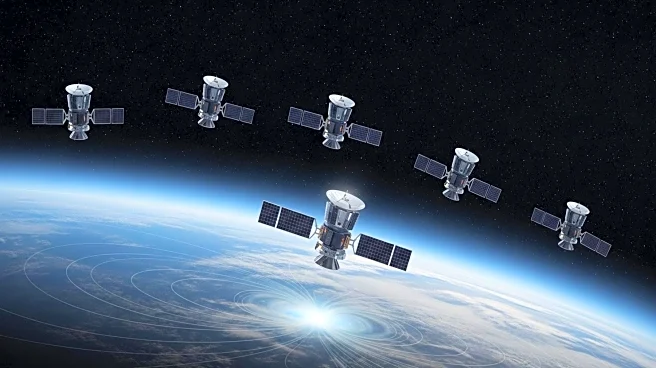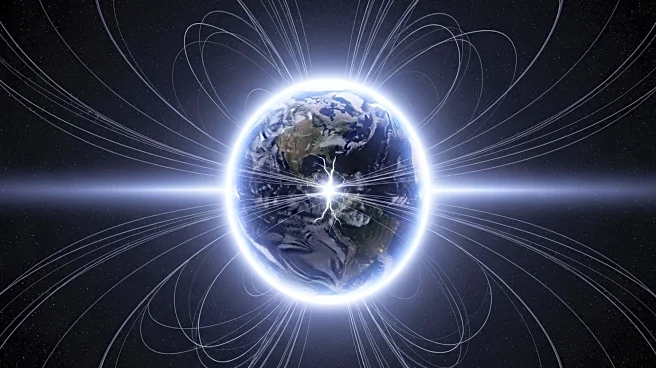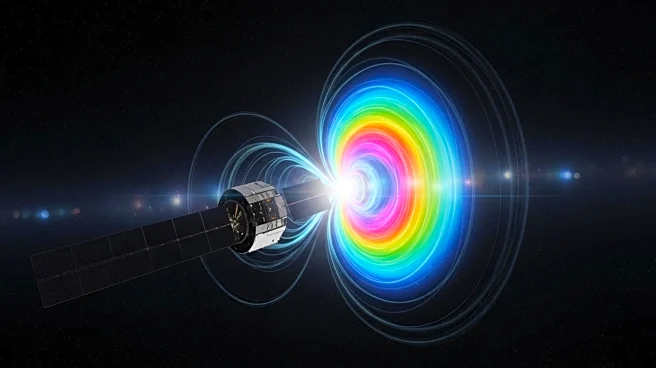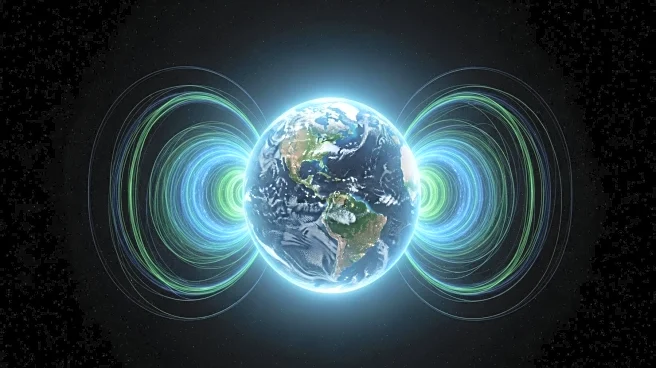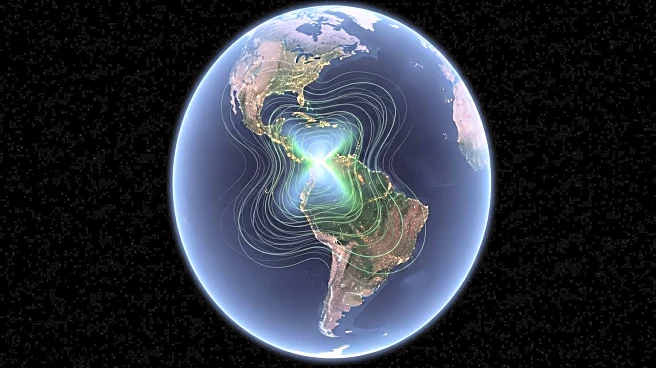What's Happening?
The European Space Agency (ESA) has reported a growing weak spot in Earth's magnetic field, known as the South Atlantic Anomaly, based on over a decade of satellite data. This anomaly, located southeast
of South America and southwest of Africa, results in a dip in the magnetic field, exposing satellites to increased radiation, which can cause technical issues. The anomaly has expanded by an area nearly half the size of continental Europe, with its weakening accelerating since 2020. The ESA's Swarm satellites have been studying the anomaly, revealing that different parts are changing at varying rates, with magnetic field lines bouncing back into the Earth's core.
Why It's Important?
The expansion of the South Atlantic Anomaly poses risks to satellite operations, as increased radiation exposure can lead to malfunctions and data loss. Understanding the anomaly's dynamics is crucial for developing strategies to protect satellites and other space-based technologies. The findings also contribute to the broader understanding of Earth's magnetic field, which plays a vital role in shielding the planet from cosmic radiation. As the anomaly continues to grow, it may impact navigation systems and communication technologies reliant on satellite data.
What's Next?
The ESA plans to continue monitoring the anomaly with its Swarm satellites, aiming to extend the data record beyond 2030. This ongoing research will provide insights into the anomaly's behavior and its impact on Earth's magnetic field. Scientists may explore the underlying causes of the anomaly's expansion, potentially leading to advancements in geomagnetic models. Collaboration with other space agencies could enhance efforts to mitigate the effects of the anomaly on satellite operations.
Beyond the Headlines
The anomaly's expansion prompts discussions on the resilience of space infrastructure and the need for adaptive technologies to withstand increased radiation exposure. As Earth's magnetic field undergoes changes, considerations for future satellite designs and operational protocols become essential. The anomaly also highlights the interconnectedness of Earth's systems, emphasizing the importance of continued research in geomagnetism.
